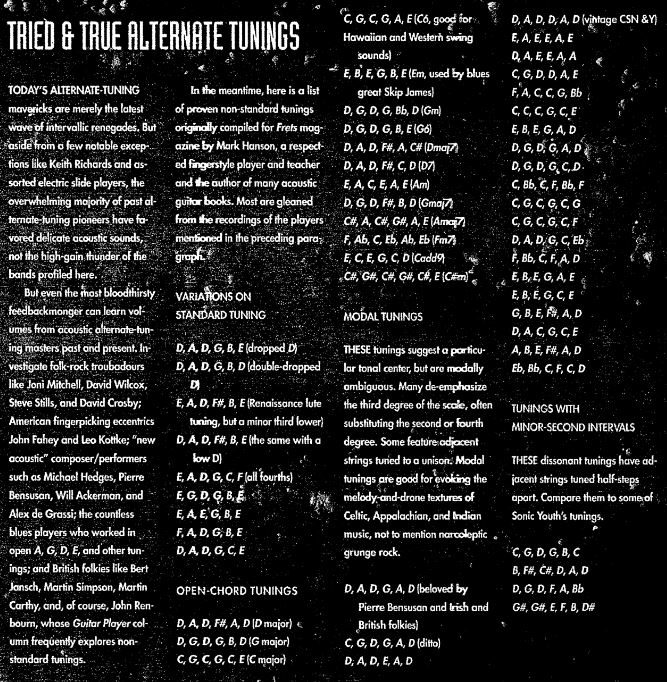Alternate Tunings For Life (Cont)
The current tuning I've been exploring is E-G#-D-F# (which now has the moniker "Drop 31" (or "Drop 13") because the third and first strings are dropped a half-step from standard tuning. I've now been giving them short names such as "G5" or "F7", or "Yesterday"--any tuning where all the strings are lowered a whole step--as a riff on Paul McCartney's use of it on Yesterday so as to put the melody (and the playing of chords) in a more comfortable range.
I'm also reminded of Jaco Pastorius, who sometimes was a one-man quartet--at once the bassist, the conga player, the pianist (with his use of bass harmonics), and the trombonist or French Horn player, playing legato horn-like melodies in the upper register. The tuning experiments bring back memories of my jazz period when I used to frequently write on a bass---partly because I was a Jaco fan and young players typically tend to emulate their heroes. But ultimately those ideas had to be arranged for other instruments.
I don't know Jaco's way of working, but I am assuming the opening of Liberty City for example was conceived on a bass, taken to the piano, and then arranged for horns. After the opening segment, he's again playing a line that is a quasi-horn part in the upper register of the bass. Very often in alternate tunings, I don't know exactly what the chord changes are or even what the key is. But that's the point of playing in alternate tunings: it gives you a new map. But the piece also has to evolve as other instruments are used. When I take an idea to the piano, the old traditional harmony map comes out as I try to overlay a traditional harmonic structure. Once it has reached that point the original idea is merely an idea sketched on a napkin. It can't be a song in itself. And the bass part that ultimately gets played is quite rudimentary.
Music written on bass typically doesn't travel well due to its range--almost all below middle C. If you play everything in that range it begins to beg for higher frequencies. One of the interesting characteristics of strings with a lower fundamental frequency is that the natural harmonics on the string are in fact those higher frequencies. This was the virtual "Rhodes piano" that Jaco played when he was using harmonics which mimicked the comping by the pianist in a jazz ensemble. But in a division of labor in a group, the pianist can do that. Plucked harmonics on a bass also are difficult to record so they cut through the mix, so I just play them on the instrument more suited to them. Instead of the bass playing the Rhodes part, simply play it on the Rhodes.
You can write on any instrument if we define "writing" as coming up with an idea. It can be an idea played on a sax or just a loop or sample. But ideas aren't songs in the literal sense. We can make up definitions, such as video shorts done on the fly as popular "songs", but if you develop that idea it will become something else.
Another prime example is the initial idea for Get Back, initially played as an A7 bass riff and the rest is history. It could have just as well been another generic idea.
***
Alternate tunings articles FYI:

Comments